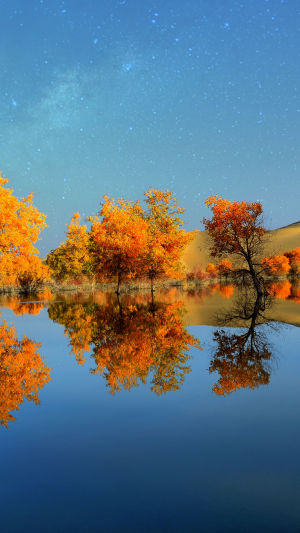An oasis is a green area with water and grass in the desert. It is mostly distributed in bands near rivers or wells or springs, and the foothills of mountains irrigated by snow and ice melt.
Oases have fertile soil and easy access to irrigation and are often places where agriculture and animal husbandry are developed in arid areas.
How are oases formed?
Underneath the desert floor, there is an abundant water source, flowing in underground rivers that come from the high mountains near the oasis.
The mountains are covered with snow and ice, and when the snow melts in summer, the water flows through the gaps in the valleys to the lower parts of the desert, where it is hidden between the layers of sand and clay, forming underground rivers.
These underground waters nourish the plants in the desert and are also available for humans and animals to drink, bringing life to the desert and forming an oasis.
In the Sahara Desert, people can even fish from the underground rivers of the desert.
Desert areas have little natural precipitation, making it difficult to meet the needs of growing crops.
However, these oasis areas have high summer temperatures and adequate heat conditions, so as long as there is sufficient irrigation water, crops such as wheat, rice, cotton, melons, and sugar beets can grow well.
Most of the water for oases comes from underground, with springs and wells recharged by sandstone aquifers, and their receiving areas may be as far away as more than 800 km, such as the oases of al-Kharijah and al-Dakhilah in the Libyan desert.
Two-thirds of the Saharan population is settled in and dependent on the oases for irrigation, and these areas have temperatures suitable for rapid plant growth.
In all oases of the Sahara, date palm trees are the main trees and source of food, in the shade of which grow lemon fruit, figs, peaches, apricots, vegetables, and grains such as wheat, barley, and corn.
It seems amazing that trees can sprout in an oasis. Where do the seeds come from?
Scientists believe that birds find water sources and swoop down to drink.
The seeds they swallowed earlier are deposited in the moist sand around the water pits, and those that are hardy enough will germinate and grow.
People in desert areas such as the Sahara Desert in Africa or the arid regions of Central Asia have long relied on these oases to provide food and water for their camels and drivers during their difficult desert crossings.
Today, some pastoralists in West Africa still rely on oases to sustain themselves and their livestock as they cross the deserts of different grazing areas.
In addition, many desert-adapted wild animals seek water and shelter from the hot sun at the local oases.





